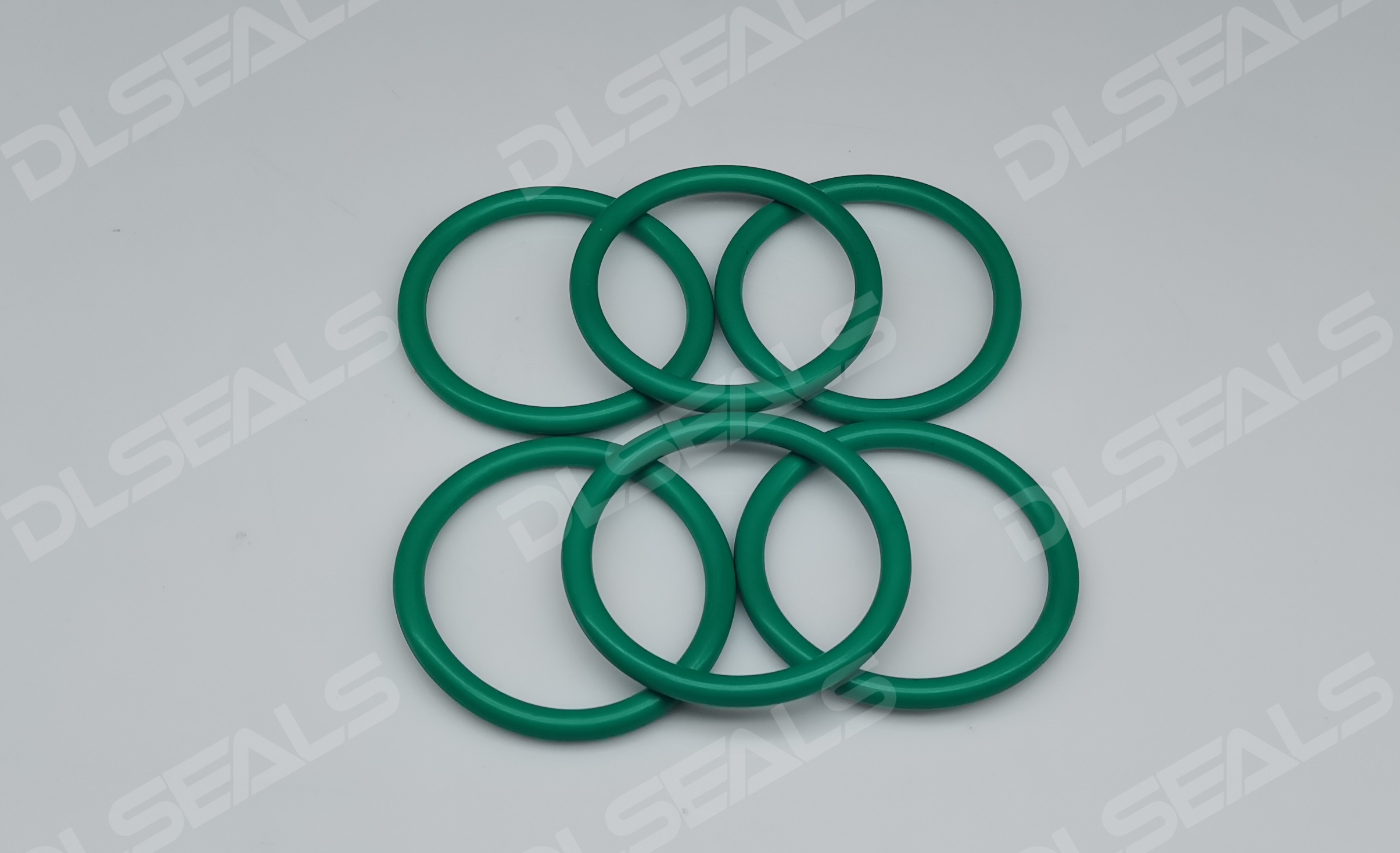In the thermal management system of electric vehicles, refrigerant pipeline sealing is the core technology to ensure heat pump efficiency, driving range and environmental safety. Xiaomi Automobile uses an advanced carbon dioxide heat pump (R744) and R1234yf dual refrigerant system. Its pipeline sealing needs to achieve lifelong zero leakage in the temperature range of -40℃ to 150℃ and a maximum supercritical pressure of 300Bar. This article deeply analyzes the technological breakthrough of Xiaomi’s refrigerant pipeline sealing from four dimensions: material science, structural innovation, intelligent monitoring and production line technology.
1. Extreme Challenges of Refrigerant Seals
1. Medium Characteristics and Operating Conditions
Parameters R1234yf System R744 (CO₂) System Sealing Challenges
Working Pressure 35Bar (Gaseous State) 100Bar (Supercritical State) Traditional Seals Extrusion Failure
Molecular Diameter 0.42nm 0.33nm High Permeation Leakage Risk (especially CO₂)
Environmental Protection Requirements GWP=1 GWP=1 Annual Leakage Rate <0.5g/year (EU Standard)
Temperature Alternation -40℃~120℃ -40℃~150℃ Low Temperature Brittleness of Materials/High Temperature Aging
2. Industry Pain Points
R1234yf Swelling Effect: Causes Nitrile Rubber (NBR) Volume Expansion>30%, Seal Failure.
CO₂ Supercritical Permeation: The permeability is 10 times that of R134a at 100Bar Pressure.
Thermal shock fatigue: The temperature difference changes suddenly during fast charging (-30℃→120℃/min), causing rubber cracks to expand.
2. Material system: molecular barrier design
1. Matrix material selection
Material R1234yf Swelling rate CO₂ permeability (g·mm/m²·d) Temperature resistance Xiaomi solution
HNBR +18% 1200 -40℃~150℃ ✘ Eliminated
FKM (standard type) +8% 850 -20℃~200℃ ✘ Low temperature embrittlement
Perfluoroether rubber (FFKM) +0.5% 90 -25℃~300℃ ✔ Main pipeline sealing
TPEE/PTFE composite layer +2% 45 -60℃~200℃ ✔ Quick-release joint sealing
2. Nano-enhanced technology
Graphene barrier layer: 1.5wt% functionalized graphene is dispersed in FFKM, and the permeability is reduced by another 40%.
MOF molecular sieve coating: metal organic framework (such as ZIF-8) is grown on the surface, with a pore size of 0.34nm <CO₂ molecule diameter (0.33nm), achieving molecular-level interception.
III. Structural innovation: from static sealing to dynamic vibration resistance
1. High-pressure sealing structure
Structural type Pressure resistance Xiaomi application site Innovation point
Metal end face seal 300Bar Compressor outlet flange Ceramic coating (Al₂O₃) friction pair
Triple composite lip ring 150Bar Electronic expansion valve interface Main lip (FFKM) + energy storage spring + shockproof auxiliary lip
Self-tightening clamp 100Bar Aluminum tube quick connector Shape memory alloy (NiTi) pre-tightening ring
2. Anti-fretting wear design
Surface texturing: Laser engraved micro-pits (diameter 50μm, depth 10μm) to store refrigerant lubricating film.
Asymmetric bellows: The corrugation angle of the pipeline compensator is 45°, and the vibration stress is reduced by 35% (NVH actual measurement).
IV. Intelligent manufacturing and process control
1. Sealing parts production process
Process Key technology Precision control
Mixing Internal mixer temperature control ±1℃ (graphene dispersion) Filler dispersion > 95%
Molding vulcanization Variable temperature vulcanization (170℃×5min→200℃×2h) Dimension tolerance ±0.03mm
Surface treatment Plasma fluorination (CF₄ gas) Surface energy ≤18mN/m
Online detection Machine vision + AI defect recognition Defect rate <50ppm
2. Pipeline assembly process
Pre-coating technology: The sealing ring is pre-coated with thermosetting fluorosilicone (activated at 120℃) to replace on-site gluing.
Torque-angle monitoring: The electric tightening gun provides real-time feedback of assembly stress to prevent overpressure deformation.
V. Intelligent leakage monitoring system
1. Multi-level monitoring architecture
Level Technical solution Leakage resolution
Seal ring body Embedded thin film piezoresistive sensor 0.1Bar pressure fluctuation
Pipeline node Infrared absorption spectrum (R1234yf characteristic peak detection) 5ppm concentration
System level Refrigerant mass flow meter comparison Annual leakage <2g traceable
2. Cloud warning logic
Chart
Code
VI. Verification standards and competitive products
1. Extreme environment test
Hot and cold shock: -40℃ (30min) → 150℃ (30min), 1000 cycles, leakage rate <0.5g/year.
High-pressure blasting: 450Bar water pressure test (3 times the working pressure), no extrusion of seals.
Road vibration: bench simulates 300,000 kilometers of road spectrum, micro-wear depth <0.05mm.
2. Industry performance benchmark
Parameters Xiaomi solution Tesla solution Industry average
CO₂ permeability 45g·mm/m²·d 68g·mm/m²·d >300g·mm/m²·d
Assembly time 18 seconds/joint 32 seconds/joint 45 seconds/joint
System leakage rate 0.3g/year 0.8g/year 2.5g/year
Conclusion
Xiaomi’s automotive refrigerant pipeline sealing technology achieves lifelong sealing under supercritical CO₂ conditions through perfluoroether rubber molecular barrier, MOF bionic coating and triple composite lip structure. Its technical barriers are not only in material formula, but also in the full-link closed loop of intelligent manufacturing and intelligent monitoring – the pressure data of each sealing ring is uploaded to the cloud in real time, combined with infrared spectroscopy and multiple verification of flow meters, the leakage risk is nipped in the bud.
Post time: Jun-04-2025

